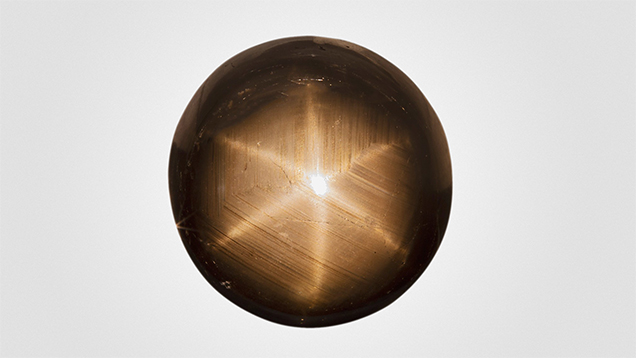What Is The Origin Of Black Spinel?
Black spinel is a captivating gemstone that has captured the attention of jewelry enthusiasts with its mesmerizing dark hue and enchanting brilliance. In this article, we will delve into the origin of black spinel, unraveling its fascinating journey from formation to its prominence in the world of gemstones. Discover the secrets behind this alluring gem and gain a deeper appreciation for its beauty and allure.
Formation of Black Spinel:
Black spinel is a variety of spinel, a mineral belonging to the oxide group. Its formation occurs in metamorphic rock environments, where high temperatures and pressures cause chemical reactions and transformations in minerals. Spinel crystals are typically found in igneous rocks, such as marble and gneiss, as well as in alluvial deposits, where they are carried by rivers and streams.

Black Star Sapphire
Black Star Sapphire is a fascinating gemstone that has captured the fascination of gem enthusiasts worldwide. Known for its mesmerizing star-like effect, this gemstone holds a mysterious beauty that sets it apart from other sapphires. In this article, we will delve into the origin, properties, and symbolic significance of Black Star Sapphire, uncovering the secrets behind its captivating allure.
Black Star Sapphire is primarily sourced from regions such as Thailand, Australia, Sri Lanka, and Madagascar. These locations are known for their rich deposits of sapphires, and it is within these gem-rich lands that the unique Black Star Sapphire is discovered. The gemstone forms through a combination of specific geological conditions, including the presence of trace elements and inclusions that create the asterism effect.
The Origin of Black Spinel:
Black spinel has been found in various locations around the world. Some notable sources include Myanmar (formerly Burma), Sri Lanka, Thailand, Brazil, and Madagascar. These regions are renowned for their production of high-quality spinel gemstones, including the coveted black spinel.
Myanmar (Burma) has long been known for its exceptional spinel deposits, including the black variety. The Mogok region in Myanmar is particularly renowned for its black spinel mines, which have produced some of the finest specimens known for their deep, rich color and excellent clarity. Sri Lanka, another prominent source, yields black spinel gemstones with a captivating sparkle and exquisite luster.
Thailand, Brazil, and Madagascar are also significant producers of black spinel. Thailand's spinel mines have gained recognition for their gem-quality black spinel, often exhibiting intense black hues and exceptional brilliance. Brazil and Madagascar are known for their black spinel deposits that showcase unique characteristics, such as asterism, a phenomenon that creates a star-like effect known as black star spinel or black star sapphire.

Historical Significance:
Black spinel has a rich historical significance that dates back centuries. In ancient times, spinel gemstones were often mistaken for other precious stones, such as rubies and sapphires, due to their similar appearances. The famous Black Prince's Ruby, part of the British Crown Jewels, is a prime example of this misconception. The gemstone adorning the Imperial State Crown of England is, in fact, a large spinel.
Black spinel's allure and deep black color have fascinated civilizations throughout history. It has been cherished as a symbol of power, protection, and resilience. In ancient lore, black spinel was believed to provide strength, vitality, and a shield against negative energies. Its association with protection and grounding made it a favored gemstone for warriors and individuals seeking inner strength.
Properties of Black Spinel:
Black spinel is characterized by its captivating black color, which ranges from deep ink black to dark charcoal hues. It possesses a vitreous to sub-metallic luster that adds to its allure and charm. The gemstone exhibits excellent clarity, often appearing transparent or slightly opaque, allowing light to penetrate and create a brilliant sparkle.
With a hardness rating of 8 on the Mohs scale, black spinel is durable and suitable for various jewelry designs. It has a cubic crystal structure, which contributes to its impressive brilliance and reflective properties. Its density and refractive index enhance its ability to refract and reflect light, resulting in a captivating play of light within the gemstone.
Conclusion:
The origin of black spinel reveals a captivating journey from its formation in metamorphic rock environments to its discovery in various regions around the world. Myanmar, Sri Lanka, Thailand, Brazil, and Madagascar have emerged as significant sources of black spinel, each contributing to the gemstone's unique characteristics and allure.
Throughout history, black spinel has played a prominent role, often mistaken for other precious stones and revered for its deep black color. It has symbolized power, protection, and resilience, captivating the imaginations of ancient civilizations. Today, black spinel continues to be cherished for its beauty and is widely used in jewelry designs.
With its captivating black hue, vitreous to sub-metallic luster, and excellent clarity, black spinel possesses an undeniable allure. Its durability, as evidenced by its hardness rating on the Mohs scale, makes it suitable for a variety of jewelry styles and settings. The gemstone's cubic crystal structure and optical properties contribute to its mesmerizing brilliance and captivating play of light.
Conclusion
In conclusion, black spinel's origin, formation, and historical significance contribute to its mystique and appeal. Its allure lies in its deep black color, exceptional clarity, and captivating brilliance. Whether you're drawn to its historical significance, its symbolism, or its stunning beauty, black spinel remains a gemstone that never fails to captivate and fascinate.
Comments
Post a Comment